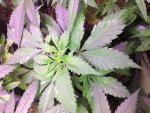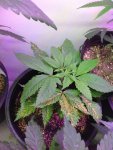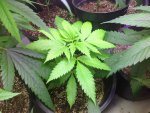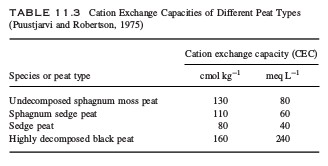Saint Alfonzo
Vegging
Hi all
I popped some seeds of blueberry regular and have three plants showing colours and leaf degradation despite being otherwise happy.
I am treating these plants as I would all my others and without many nutes yet because they are recently from seed.
But as I start to feed them more, are there any tips from the community on how to treat this strain or the needs of plants showing these traits.
#1 very yellow all over plant. But healthy otherwise
#2 kinda blotchy first growth but turning to healthy growth that then turns a little blotchy but with healthy new growth
It's a very squat plant with tender leaves.
Unfortunately I only have these three blueberry so I want to take good care of them.
They seem happy just very different from the plants they are around.
Story of my life lol.
I popped some seeds of blueberry regular and have three plants showing colours and leaf degradation despite being otherwise happy.
I am treating these plants as I would all my others and without many nutes yet because they are recently from seed.
But as I start to feed them more, are there any tips from the community on how to treat this strain or the needs of plants showing these traits.
#1 very yellow all over plant. But healthy otherwise
#2 kinda blotchy first growth but turning to healthy growth that then turns a little blotchy but with healthy new growth
It's a very squat plant with tender leaves.
Unfortunately I only have these three blueberry so I want to take good care of them.
They seem happy just very different from the plants they are around.
Story of my life lol.




